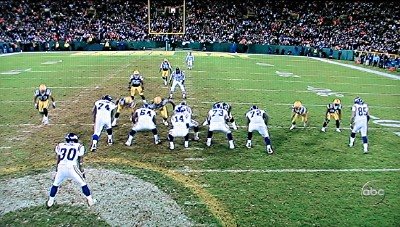 HDTV is not complete without Dolby Digital. It has to be at least a 5.1 system (five speakers + one subwoofer). Good thing I installed a bunch of 16-gauge speaker wires in the wall and attic during the closet removal on the other side. For the two rears I first thought of flush in-ceiling speakers. But that would require a custom system, and aiming the sound would still be questionable. My office in-wall speakers sound great, but the walls here are exterior -- there's insulation and a header beam to deal with.
HDTV is not complete without Dolby Digital. It has to be at least a 5.1 system (five speakers + one subwoofer). Good thing I installed a bunch of 16-gauge speaker wires in the wall and attic during the closet removal on the other side. For the two rears I first thought of flush in-ceiling speakers. But that would require a custom system, and aiming the sound would still be questionable. My office in-wall speakers sound great, but the walls here are exterior -- there's insulation and a header beam to deal with.So I decided to get a bundled system (sometimes referred to as HTIB or Home Theater In a Box) with wall-mountable satellites. I got the same make as the TV, which allows use of just one remote. I made triangular boxes so that simple wall-mounting brackets could be used, aiming was more versatile, and wiring easily routed from the ceiling. For its shape and size I had to consider the future window trim and crown moulding. I think it looks okay.
HDTV has to be experienced to be appreciated. There are many levels of quality. Digital is all-or-nothing. There's never poor picture (displays vary, but that's a different matter) -- if the signal is weak there's just no picture at all. Not all digital is HD. Not all HD takes advantage of rear speakers. Not all DVD players can upconvert to near-HD resolution. And proper HDMI and optical cabling becomes noticeable. But once everything is in place, the results are truly amazing.
Now Monday Night Football crowds scream from behind.

Check HD programming in your area.


 First I had to sell my old entertainment center. Cabinets like this will soon be totally obsolete -- the TV bay doesn't fit today's widescreens, and
First I had to sell my old entertainment center. Cabinets like this will soon be totally obsolete -- the TV bay doesn't fit today's widescreens, and  I got a flatpanel -- for versatility. They don't take up much space. Prices have dropped, too. The other high-end option was projector, but that would require considerable compromise to room decor for a screen and the projector location. A flatpanel is so hip.
I got a flatpanel -- for versatility. They don't take up much space. Prices have dropped, too. The other high-end option was projector, but that would require considerable compromise to room decor for a screen and the projector location. A flatpanel is so hip.

 Precise elevation drops are important for proper water flow while maintaining maximum pipe coverage. Here, the outlet at the curb was already set at no more than half an inch above the outflow lip. It establishes where all upstream pipes must connect. Minimal intrusion into future landscaping was the objective, so the long straight run was kept at 1 percent slope. The shorter leg coming down to it is at 10 percent, which should provide plenty of flow momentum.
Precise elevation drops are important for proper water flow while maintaining maximum pipe coverage. Here, the outlet at the curb was already set at no more than half an inch above the outflow lip. It establishes where all upstream pipes must connect. Minimal intrusion into future landscaping was the objective, so the long straight run was kept at 1 percent slope. The shorter leg coming down to it is at 10 percent, which should provide plenty of flow momentum.
 I used two pieces of 1-meter trench drains (cemented together) cast into concrete, becoming a large inlet for rainwater that comes fast over the wide walkway. Establishing exact relative heights were important at every step during the installation. The step down and width of pour are essentially rise and run of stairs, so those minimum standards were considered. I kept the riser at four inches and gave the run a wide 13 inches.
I used two pieces of 1-meter trench drains (cemented together) cast into concrete, becoming a large inlet for rainwater that comes fast over the wide walkway. Establishing exact relative heights were important at every step during the installation. The step down and width of pour are essentially rise and run of stairs, so those minimum standards were considered. I kept the riser at four inches and gave the run a wide 13 inches.